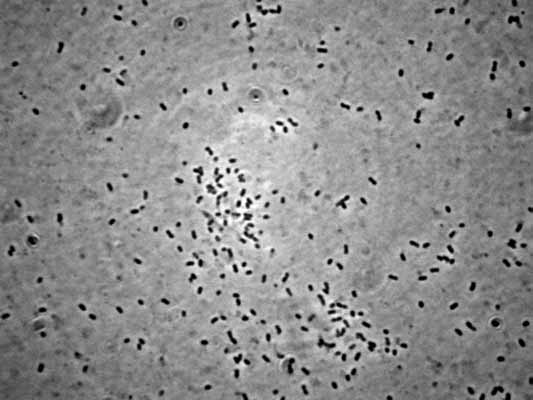The phylum Chlorobi, which includes all known members of the green sulfur bacteria, is one of only six bacterial phyla that contain chlorophototrophic members. Chlorobi are Gram-negative organisms, and all known members are strictly anaerobic and strictly photoautotrophic. Most members oxidize sulfide or thiosulfate as electron donors for carbon dioxide fixation, although some can oxidize hydrogen or ferrous iron. Oxidation of sulfide leads to the extracellular deposition of sulfur globules, which are usually subsequently oxidized to sulfate. Most well characterized strains are capable of nitrogen fixation. In nature these organisms are important in the primary fixation of carbon and nitrogen in anoxic environments where sufficient sulfide and light exist to support their growth. These organisms are thus characteristically found in stratified lakes, microbial mats, and sulfide-rich hot springs. All known members produce a specialized light-harvesting antenna structure, the chlorosome, and Type 1 reaction centers, and all members synthesize bacteriochlorophyll (BChl) c, d or e as the major pigment molecule along with smaller amounts of BChl a and Chl a. Chlorobaculum parvum DSM 263 (NCIB 8327) was formerly known as Chlorobium vibrioforme subsp. thiosulfatophilum DSM 263 (NCIB 8327), a thiosulfate-utilizing member of the Chlorobi. C. parvum has a characteristically high mol% GC content of its DNA, 56.6%, and requires addition of 1% (w/v) NaCl to the growth medium for optimal growth. As described by Imhoff (1), members of the genus Chlorobaculum are green sulfur bacteria with vibrioid or rod-shaped single cells, which sometimes produce gas vesicles. These strains were mostly classified initially as members of the genus Chlorobium, but recent molecular analyses by Alexander et al. (2) suggested that these strains formed a distinctive clade (Group 4) within the phylum Chlorobi. The taxonomy of the group has recently been revised on this basis by Imhoff (1). The cell size ranges from about 0.7 to 1.1 µm in width. The major photosynthetic pigments are bacteriochlorophyll (BChl) c or d and BChl a. Green-colored strains contain chlorobactene as the major carotenoid, while brown-colored strains (producing BChl e) produce isorenieratene as the major carotenoid. The wild-type version of the type strain of C. parvum produces BChl d, and Maresca et al. (3) showed the molecular basis for this mutation to be a frame-shift in the bchU, the gene encoding the C-20 methyltransferase for BChl c biosynthesis. Under prolonged selection at low light intensity with a tungsten source, gain-of-function mutants again able to synthesize BChl c can be isolated, and in these strains the bchU mutation has reverted or been suppressed, leading to restoration of the correct bchU reading frame (3). In order to provide a complete molecular description of the physiological and metabolic diversity of the members of the phylum Chlorobi, genome sequencing of the type strains of all described genera and species is in progress. The C. parvum genome was determined by pyrosequencing at The Pennsylvania State University in collaboration with Dr. Stephan C. Schuster. PCR and traditional Sanger sequencing were employed in gap closure, polishing and sequence verification. Initial analyses of the genomic data support the suggestion of Imhoff and colleagues (1, 2) that members of the genus Chlorobaculum are distinct and different from members of the genus Chlorobium. References:
|
||
|
||
Chlorobaculum parvum NCIB 8327

